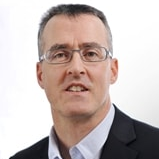Membrane Technologies for Sustainability
A special issue of Membranes (ISSN 2077-0375). This special issue belongs to the section "Membrane Applications".
Deadline for manuscript submissions: closed (31 May 2023) | Viewed by 26564
Special Issue Editor
Interests: membrane processes; electrodialytic phenomena; membrane characterization and predictive model; separation; bio-food compounds; plant proteins; bioactive peptides; dairy products; health benefits; eco-efficiency; food production lines; valorization of co-products; circular economy
Special Issues, Collections and Topics in MDPI journals
Special Issue Information
Dear Colleagues,
This Special Issue will present the latest achievements in membrane technologies for improving the sustainability of the food, biotechnological, biopharmaceutical, and chemical industries. Indeed, population growth and urbanization present serious challenges for these sectors, and to satisfy these demands, these industries would have to significantly increase their productivity. However, these industries are aware that in addition to controlling their impacts on the environment, they will have to maintain their levels of safety and quality standards. In this context, the aim of the Special Issue is to obtain a holistic picture of the latest advances in membrane technologies orientated towards the improvement of the sustainability.
The scope of this Special Issue involves a large number of topics in the field of membrane science, including membrane applications and the properties of the resulting fractions or products. We welcome papers that include or report on the following: case studies in the field of separation, purification under the action of external pressure, and electric potential gradients applied to a membrane; experimental studies providing new knowledge on the mechanisms of molecule transportation in membrane systems; case studies on material structure–properties relationships; the physicochemical aspects of separation, purification, and fractionation of organic acids, bioactive compounds, food compounds, and nutrients in membrane systems; the mechanisms of electric current or pressure gradients and their impact on molecule transportation across membranes; the use of membranes to reduce wastewater and valorize by-products; how membrane systems can contribute to a circular economy; a description of molecule transportation through all kinds of membranes; structural characteristics of membranes and their impact on membrane properties and performance for separation processes; life cycle assessment of membrane processes; zero-waste membrane processes; processing of alternative resources by membrane systems and recovery of fractions or products with improved properties.
Prof. Dr. Laurent Bazinet
Guest Editor
Manuscript Submission Information
Manuscripts should be submitted online at www.mdpi.com by registering and logging in to this website. Once you are registered, click here to go to the submission form. Manuscripts can be submitted until the deadline. All submissions that pass pre-check are peer-reviewed. Accepted papers will be published continuously in the journal (as soon as accepted) and will be listed together on the special issue website. Research articles, review articles as well as short communications are invited. For planned papers, a title and short abstract (about 100 words) can be sent to the Editorial Office for announcement on this website.
Submitted manuscripts should not have been published previously, nor be under consideration for publication elsewhere (except conference proceedings papers). All manuscripts are thoroughly refereed through a single-blind peer-review process. A guide for authors and other relevant information for submission of manuscripts is available on the Instructions for Authors page. Membranes is an international peer-reviewed open access monthly journal published by MDPI.
Please visit the Instructions for Authors page before submitting a manuscript. The Article Processing Charge (APC) for publication in this open access journal is 2700 CHF (Swiss Francs). Submitted papers should be well formatted and use good English. Authors may use MDPI's English editing service prior to publication or during author revisions.
Keywords
- membrane fabrication
- membrane technology
- pressure-driven processes
- electrically driven processes
- food, biotechnological, biopharmaceutical and chemical or petrochemical sectors
- ultrafiltration/nanofiltration/microfiltration/reverse osmosis
- membrane coupling
- membrane phenomena
- electrodialysis
- membrane contactor
- membrane reactor
- separation/purification
- ecoefficiency
- circular economy
- valorization of co-products or by-products
- fundamentals on membrane transport
- water reduction
- bioactive molecules
- zero-waste membrane process
- bioresources
- life-cycle assessment






